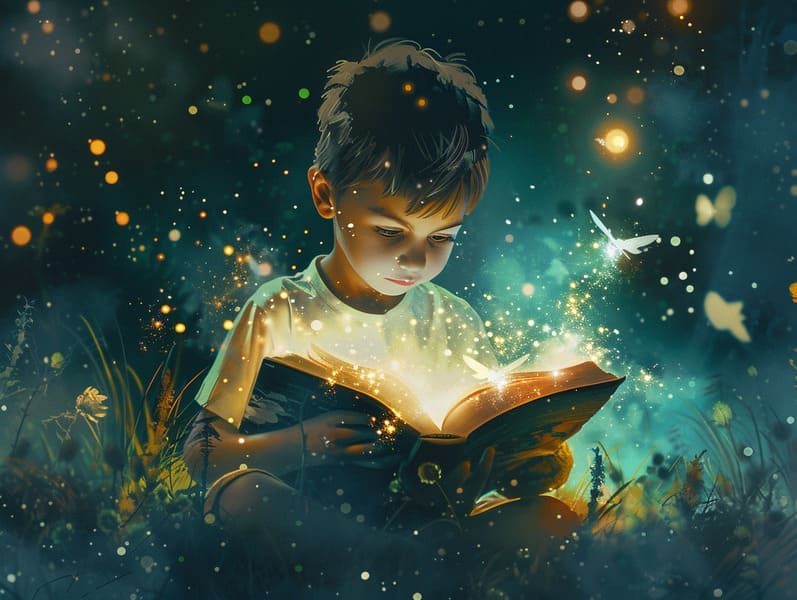Exploring the Roots of Old Fairy Tales and Its Immortal Mystique.

Fairy tales have legendary status. These stories have been told from one generation to the next millennia before they were ever recorded. They were born from a variety of backgrounds, including European traditions. They were initially passed along among older generations, often carrying themes and messages relevant to the societal norms and beliefs of the time.
Jacob and Wilhelm Grimm, Jacob and Wilhelm, were among the first to assemble many of these beloved tales. Their anthology, "Grimm's Fairy Stories," included narratives like "Cinder Maid," "The Story of Hansel and Gretel," and "Snow-White and Rose-Red," which have since become classics in the world of iconic fairy tales. Similarly, Hans Andersen's charming fairy tales, such as "The Sea Maid," and "The Ugly Duckling," have touched hearts worldwide, guaranteeing their place in the pantheon of treasured fairy tales.
Despite being ancient, classic fairy tales remain as relevant as ever, especially as children's bedtime stories. These whimsical stories are now available in numerous formats, including colorful picture books, delightful animations, and internet fairy tales.
Their persistent charm can be traced to several fascinating points:
Vital Lessons: Classic fairy tales often illustrate important moral lessons. Tales like "The Tale of the Boy Who Cried Wolf" teach the significance of integrity, while "The Tortoise and the Hare" emphasize the merits of persistence and unassuming nature. These narratives offer young ones clear distinctions between virtue and vice, building their moral compass in a gentle yet meaningful way.
Empathy and Awareness: Classic fairy tales frequently portray characters facing obstacles and hardships, provoking children to understand with their struggles and cheer for their triumphs. For instance, "Beauty and Her Beast" demonstrates the importance of appreciating inner worth to perceive the true nature of a individual, nurturing kindness and comprehension.
Cultural Knowledge: Many fairy tales are saturated in the cultural contexts from which they came. Reading these fairy tales can provide enlightening views into different heritages, cultivating a sense of global insight and knowledge.
Imagination and Creativity: The magical elements in classic fairy tales—enchanted forests—revitalize children’s fantastical thinking. These narratives transport readers to enchanted realms, generating innovative dreams and a sense of marvel that persists a lifetime.
Classic fairy tales are not only spellbinding but also edifying. They function as delightful tools in advancing various mental and emotional abilities in the young. When ancient fairy tales are recited, they strengthen verbal development by teaching new phrases and elaborate sentence structures. This practice also improves hearing abilities and mindfulness, as young readers track the narrative, prepared to see what happens next.
Furthermore, talking about the themes and characters of classic fairy tales can improve analytical skills and analytical skills. Young ones are led to find patterns, anticipate outcomes, and catch on to cause and effect. These contemplations also ease the young verbalize their thoughts and feelings, advancing their emotional intelligence.
In today’s technological era, the existence of internet fairy tales has made these fairy tales more attainable than ever. Web-based platforms and programs make available wide arrays of timeless fairy tales that can be enjoyed or heard anytime, anywhere. Fairy tales narrated are particularly well-received, making available an immersive method for young readers to experience these whimsical stories. Spoken stories and read-to-me stories take characters and settings to life, often complemented by spellbinding musical scores and background music that improve the tale journey.
The timeless charm of ancient fairy tales lies in their ability to transform to changing times while keeping hold of their main lessons. Contemporary versions of these stories often showcase more representative characters and modern settings, making them relatable to today’s audience. However, the key lessons of braveness, kindheartedness, and truth remain unchanged, continuing to resonate with audiences of all ages.
Traditional fairy tales also offer a sense of contentment and comprehensibility. They render accessible a well-structured narrative with a apparent beginning, middle, and end, often closing with the settlement of conflicts and the triumph of find it here right over wrong. This foreseeability can be placating for children, providing a sense of stability in an always shifting world.
Old fairy tales continue to delight and edify new generations, maintaining their elegance and significance in modern society. As bedtime stories for kids, they give a perfect blend of fascination and comprehension, cultivating moral values, empathy, and creativity. The prevalence of online storybooks and the well-received status of fairy tales recited ratify that these old stories remain within reach to new generations.
By conserving and circulating these fairy tales, we continue to glorify the rich tapestry of storytelling and cultural heritage. Whether you are delving into a richly illustrated book, accessing a electronic library, or playing an read-aloud story, the magic of famous fairy tales is always within reach. These stories remind us of the immortal nature of storytelling and its ability to draw us together across centuries and lands.
Whether you are enjoying a colorful picture book, experiencing a cyber library, or playing an narrated book, the attraction of Grimm's fairy tales is always within reach.
These narratives reveal of the enduring influence of storytelling and its ability to unite us across epochs and places, casting a charm that delights and instructs alike.